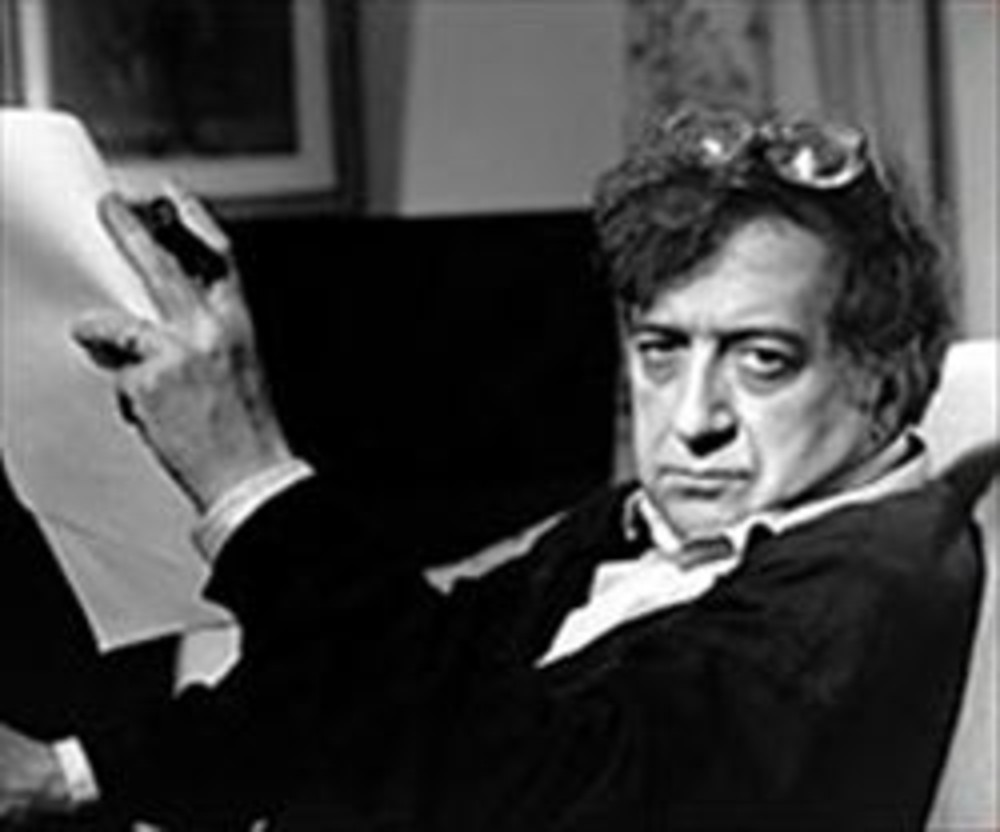Hey there reader/listener/new friend!
Luci B giving us some saucy side eye.
If you’re reading this you’re probably considering coming to our upcoming concert this Saturday BACH/BERIO at the Sawyer Yard’s Silos (HOT TAKE: you should DEFINITELY come). This concert is a site-specific installation: starting at 1:30pm and 3pm, seven of our fantastic players will each be occupying a different silo. In their personal silos, at specific times, they will each be playing excerpts of pieces by Johann Sebastian Bach and also Luciano Berio. Now, you all have probably heard of J.S. Bach, but maybe are not familiar with Luciano Berio. Lucky for you, Berio is one of my all time favorite composers! So, today I’m going to introduce you to Luciano Berio and his famous “Sequenza”(s) that you will be hearing on Saturday!
Boundaries is a word that I would never associate with Italian composer Luciano Berio. Born in 1925, his compositions always pushed what can be considered music, right up until his death in 2003. Although we’re focusing today on his “Sequenza”(s), he is known for pioneering avant-garde, mixed-media, and electronic music. If you’d like to take a quick listen to some of that, here is his Sinfonia:
What you will be experiencing on Saturday are his incredible “Sequenza”(s). Starting in 1958, Berio wrote fourteen wild solo works, each titled “Sequenza”. He wrote them for flute, harp, voice, piano, trombone, viola, oboe, violin, clarinet, trumpet, guitar, bassoon, accordian, and cello. Each of these pieces is wildly different and demands virtuosic playing in terms of technical skill and emotional range. They also each heavily feature the use of “extended techniques”. For those of you who may be unfamiliar with what “extended technique” means, it just means using the instrument to make sounds that are traditionally not associated with it. That could be a harpist slapping the wood of her harp, a flutist singing into their flute, or a singer grunting, gurgling, and screaming. What is incredible about the Sequenza(s) is that they contrast beautiful playing with these techniques, drawing the listener into a sound world that mirrors the absurdity and intensity of real life.
It’s as if each piece explores every possibility of each instrument, allowing us to hear them in a completely new way!
What is just as fascinating about how these pieces sound is how they’re notated. How do you put all these sounds onto paper? Berio’s solution was to come up with a “key”, where all the extended techniques are represented by a symbol. Each player memorizes the key for their Sequenza, so that they can decode the score. Below is the “Sequenza III” for voice you will hear on Saturday; follow along watching the score so you can take a peek at what our performers will be seeing to make these incredible sounds:
Like I said, these are some of my all time favourite pieces of music. If you’re on board for a trippy Saturday afternoon, I definitely suggest coming out to hear BACH/BERIO.
Make sure you register for a spot, we’re filling up quick! Can’t wait to see you there!
xxox Ally xoxx

